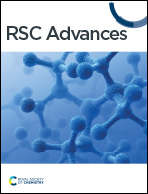Nanogel-based composites for bacterial antibiofilm activity: advances, challenges, and prospects
Abstract
Nano-based approaches, particularly nanogels, have recently emerged as a potential strategy for combating biofilm-related infections. Their exceptional characteristics including biocompatibility, biodegradability, stability, high water content, stimuli-responsiveness, and their nano size (which enables their penetration into biofilms) make nanogels a promising technology in the biomedical field. However, exploring nanogels for biofilm treatment remains in its early stages. This review examined the status of nanogels application for the treatment of bacterial biofilms. Recent investigations studied nanogels derived from natural polymers like chitosan (CS), hyaluronic acid (HA), and alginate, among others, for eliminating and inhibiting biofilms. These nanogels were utilized as carriers for diverse antibiofilm agents, encompassing antibiotics, antimicrobial peptides, natural extracts, and nanoparticles. Utilizing mechanisms like conventional antibody-mediated pathways, photodynamic therapy, photothermal therapy, chemodynamic therapy, and EPS degradation, these nanogels effectively administered antibiofilm drugs, exhibiting efficacy across several bacterial strains, notably Staphylococcus aureus (S. aureus), Pseudomonas aeruginosa (P. aeruginosa), and Escherichia coli (E. coli), among others. Despite showing promise, nanogels remain relatively underexplored in biofilm treatment. This review concludes that research gaps are still present in biofilm treatment processes including (i) a better understanding of the stimuli-responsive behaviors of nanogels, (ii) active targeting strategies, and (iii) the narrow spectrum of antibiofilm agents loaded into nanogels. Hence, future studies could be directed towards the following elements: the exploration of multi-strain biofilms rather than single-strain biofilms, other endogenous and exogenous stimuli to trigger drug release, active targeting mechanisms, a broader range of antibiofilm agents when employing nanogels, and fostering more comprehensive and reliable biofilm treatment strategies. This review found that there are currently several research gaps as well in the use of nanogels for biofilm therapy, and these include: (i) very limited exogenous and endogenous stimuli were explored to trigger drug release from nanogels, (ii) the active targeting strategies were not explored, (iii) a very narrow spectrum of antibiofilm agents was loaded into nanogels, and (iv) only biofilms of single strains were investigated.

- This article is part of the themed collection: 2024 Reviews in RSC Advances


 Please wait while we load your content...
Please wait while we load your content...